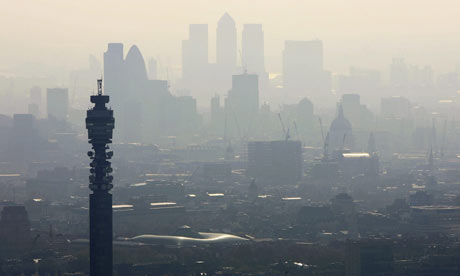“Cradle to Cradle: Remaking the Way We Make Things” is a book that was cowritten in 2002 by William McDonough, an architect in sustainable development, and Michael Braungart, a German chemist. Instead of demonizing the human footprint, the book celebrates it saying “humans don’t have a pollution problem, they have a design problem.” The idea is that instead of trying to be “less bad” with design and innovation by reducing carbon output or by limiting chemicals used, humans should just design things better from the start. “Cradle to Cradle” (c2c) is regarded as one of the most influential ecological manifestos since “Silent Spring,” a book written in 1962 by Rachel Carson which exposed the harmful effects of pesticides on the environment and led to a nationwide environmental movement in the United States. The ideas in the book “Cradle to Cradle” are quite simple, but truly change the way one thinks about human design.
In the c2c process, the full life cycle of a product is considered starting with the materials out of which it is made, all the way to what happens to the materials after a person is finished using the product. It is a process of “upcycling,” with the optimal goal of endless recycling of all the materials in a product. The phrase ‘cradle to cradle’ came from the idea that many current products go from ‘cradle to grave,’ or they are in a sense “downcycled” from their original purpose. An example of ‘downcycling’ would be recycled plastic bottles that become non-recyclable synthetic fibers, so after their second use the cycle ends and they enter a landfill. McDonough’s philosophy is that design is the first signal of human intention and therefore we must design with an intent to be good to the planet in mind.
The first way to successfully design in the c2c manner is to design using biomimicry, or copy designs presented in nature itself. For example, the authors discus in the sequel to their book “Cradle to Cradle,” called “The Upcycle,” the vision of houses designed like trees, in which they use sunlight for pure energy, clean their own water, and take in carbon dioxide and put out oxygen and McDonough strives to design his buildings in this fashion. The second way to successfully design a product in the c2c manner is to use materials that are also nutrients and the authors describe the two nutrient cycles they invented within their books. The first one is the biological cycle in which organic material can be taken from the earth used in a product and then returned to the earth after its use in an endless cycle. The second one is the technical cycle which consists of non-toxic, synthetic materials that can be endlessly used and reused in products without losing their integrity. An example of a successful technical cycle created using the c2c method is one in which yarn is recycled to carpet, which is then recycled into plastic pellets, and finally back to yarn. Not only do both of these cycles repeat endlessly on their own but they can also combine (and most often do intermix) to create endlessly recyclable products with both technical and biological nutrients. An example of this would be the Nike Considered line. Each shoe is comprised of an infinitely recyclable polyester outside and a biodegradable sole and the line demonstrates the success and possibilities of designing with the c2c design ideology.

Nike Considered Slip-on
There are five principles that govern whether a product becomes Cradle to Cradle Certified and to what degree it becomes certified. There are five achievable levels ranging from Basic to Platinum (depicted in chart below) depending on how well the product ranks in each of the categories, but the goal of c2c certification process is not for a company to settle for any one ranking, but better yet to continually improve their product and processes. The first requirement is material health meaning the materials used are safe “nutrients.” The second one is material reutilization, so the product should try to achieve the endless cycle of biological and technical nutrients. The third requirement is the use of renewable energy to power all operations. The fourth is water stewardship, meaning it is expected that water is conserved and or cleaned during the production process. The last principle is social fairness because the product should celebrate diversity in nature and in humans and be applicable and effective wherever it is meant to be used.
There are to-date over 2000 certified c2c products as well as many companies adopting the c2c methodology in their processes. “The Upcycle” discussed the many ways McDonough and Braungart had put c2c into practice over the last decade and the experiences they had implementing their idea into companies business plans. The c2c design philosophy is one that allows people to envision an attainable and happy green future rather than one full of holding back great designs and tiptoeing around climate change. By always starting at the very core of designs and using the “Cradle to Cradle” ideas, society as a whole can one day surpass the idea of sustainability and thrive harmoniously with nature.






